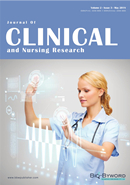Abstract
Objectives:To study the risk of falling and self-efficacy in elderly patients with hip fracture. Methodology: Forty elderly patients with hip fractures that were caused by falling were admitted into our hospital from April 2018 to April 2019, and were enrolled into this study. All patients were assessed by using the Morse Fall Scale (MFS) and Falls Efficacy Scale(FES).The basic situation of the patients with hip fractures caused by falling and the scores of MFS and FES before and after falling were evaluated. Results: Results showed that the number of patients with femoral neck fractures accounted for 70% out of all patients, and the number of patients with intertrochanteric fractures accounted for the remaining30%of the patients. The number of patients with academic qualification below primary school is 16, the number of patients with middle high school education is 11 and the number of patients with high school education and above is 13. Slipping is the cause of hip fracture that accounted for the most in patients, followed by outing activities, whereas least patients with hip fractures was caused by falling in nursing home. There were 29 patients’ whoused crutches or walking aids and this number was more than that of those who required the devices. After the MFS and FES analyses, the results (scores of MFS and FES) showed that the risk before the fall was lower. In contrast, the risk of fracture and post-surgery after the fall was greatly increased. Conclusion: The elderly patients with hip fractures were found to have increased risk of falling and thus, these patients require good care.
References
Feng Fei, Chen Hao, Zhang Zhanjin, et al. Effects of vitamin D intervention on physical function, muscle strength and risk of fall in elderly patients with osteoporosis[J].Chinese Journal of Osteoporosis and Bone Mineral Disease,2017,10(4) ): 313-319.
Xu Leyang, Fan Yongqian, Lin Weilong, et al. Quantitative CT study of proximal femoral morphological structure in elderly patients with hip fracture[J].Fudan University Journal of Medical Sciences, 2018,45(5):644-651.
Cao Wei, Zhu Xiufen, Chen Xin, et al. Correlation between osteoporotic fracture and risk of falls in the elderly population[J]. Chinese Journal of Osteoporosis and Bone Mineral Diseases, 2016, 9(4): 353 -358.
He Zhennian, Kang Xinyong. The main potential risk of contralateral hip fracture after hip fracture in the elderly [C].2015 Proceedings of the Zhejiang Provincial Orthopaedic Academic Annual Meeting. 2015: 198-198.
He Zhennian, Kang Xinyong. The main potential risk of contralateral fracture after hip fracture in elderly patients[J].Zhejiang Clinical Medicine,2015,17(11):2027-2029
Fu Changzhong, Hao Zheng, Ge Yanlei. Relationship between mindfulness level, self-feeling burden and family rehabilitation in elderly patients with hip fracture fixation[J].Journal of Hebei Medical University,2016,37(1):30- 34.
Hong Wei, Cheng Qun, Yang Douqi, et al. FRAX software evaluation of the correlation between the risk of osteoporotic fracture and the risk of falls in community residents [C].The 9th Beijing International Rehabilitation Forum Proceedings. 2014 :459-460.
Wang Ying, Fu Xiuzhen, Zhang Guangqing. Evaluation of fall risk and self-efficacy in elderly patients with hip fracture[J]. Guangdong Medical Journal,2013,34(7):1141-1143.
